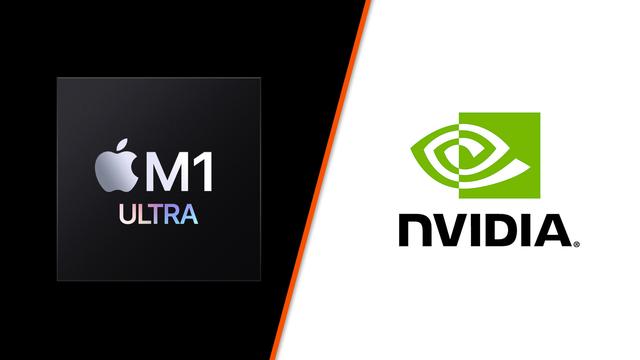Apple’s charts set the M1 Ultra up for an RTX 3090 fight it could never win
When Apple introduced the M1 Ultra — the company’s most powerful in-house processor yet and the crown jewel of its brand new Mac Studio — it did so with charts boasting that the Ultra capable of beating out Intel’s best processor or Nvidia’s RTX 3090 GPU all on its own. The charts, in Apple’s recent fashion, were maddeningly labeled with “relative performance” on the Y-axis, and Apple doesn’t tell us what specific tests it runs to arrive at whatever numbers it uses to then calculate “relative performance.”
But now that we have a Mac Studio, we can say that in most tests, the M1 Ultra isn’t actually faster than an RTX 3090, as much as Apple would like to say it is.
To hear Apple tell it, the M1 Ultra is a miracle of silicon, one that combines the hardware of two M1 Max processors for a single chipset that is nothing less than the “world’s most powerful chip for a personal computer.” And if you just looked at Apple’s charts, you might be tempted to buy into those claims.
On the chart here, the M1 Ultra does beat out the RTX 3090 system for “relative” GPU performance while drawing hugely less power. It’s a great achievement!
But that’s because Apple’s chart is, for lack of a better term, cropped. The company only shows the head to head for the areas where the M1 Ultra and the RTX 3090 are competitive against each other, and it’s true: in those circumstances, you’ll get more bang for your buck with the M1 Ultra than you would on an RTX 3090.
But what the chart doesn’t show is that while the M1 Ultra’s line more or less stops there, the RTX 3090 has a lot more power that it can draw on — just take a quick look at some of the benchmarks from The Verge’s review:
As you can see, the M1 Ultra is an impressive piece of silicon: it handily outpaces a nearly $14,000 Mac Pro or Apple’s most powerful laptop with ease. But it seems that Apple just simply isn’t showing the full performance of the competitor it’s chasing here — its chart for the 3090 ends at about 320W, while Nvidia’s card has a TDP of 350W (which can be pushed even higher by spikes in demand or additional user modifications).

It’s sort of like arguing that because your electric car can use dramatically less fuel when driving at 80 miles per hour than a Lamborghini, it has a better engine — without mentioning the fact that a Lambo can still go twice as fast.
And yes, it is very impressive that Apple is accomplishing so much with (comparatively) so little power. I’m sure Apple’s chart is accurate in showing that at the relative power and performance levels, the M1 Ultra does do slightly better than the RTX 3090 in that specific comparison. But it’s effectively missing the rest of the chart where the 3090’s line shoots way past the M1 Ultra (albeit while using far more power, too).
It feels like the chart should probably look more like this:
The thing is, Apple didn’t need to do all this chart chicanery: the M1 Ultra is legitimately something to brag about, and the fact that Apple has seamlessly managed to merge two disparate chips into a single unit at this scale is an impressive feat whose fruits are apparently in almost every test that my colleague Monica Chin ran for her review.
Apple’s UltraFusion interconnect technology here actually does what it says on the tin and offered nearly double the M1 Max in benchmarks and performance tests. Apple duct-taped two M1 Max chips together and actually got the performance of twice the M1 Max. No other chipmaker has ever really pulled this off.
That’s fantastic and a far more impressive and interesting thing for Apple to have spent time showcasing than its best, most-bleeding edge chip beating out aged Intel processors from computers that have sat out the last several generations of chip design or fudged charts that set the M1 Ultra up for failure under real-world scrutiny.
It’s OK that Apple’s latest chip can’t beat out the most powerful dedicated GPU on the planet! The 3090 is nearly the size of an entire Mac Studio all on its own and costs almost a third as much as Apple’s most powerful machine. But I can’t help but wish that Apple would focus on accurately showing to customers the M1 Ultra’s actual strengths, benefits, and triumphs instead of making charts that have us chasing after benchmarks that — deep inside — Apple has to know that it can’t match. At least, not yet.
Update March 17th, 2:25pm: Added RTX 3090 power specifications for better comparison.
Correction March 17th, 1:55pm: The Shadow of the Tomb Raider chart in this post originally featured a transposed legend for the 1080p and 4K benchmarks. We regret the error.








